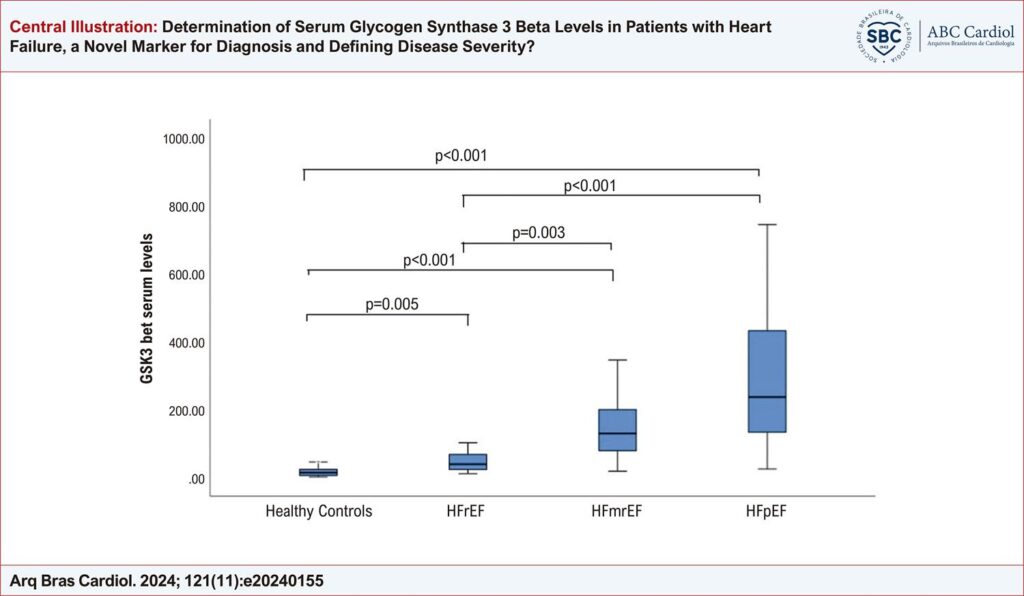Arq. Bras. Cardiol. 2024; 121(11): e20240155
Determination of Serum Glycogen Synthase 3 Beta Levels in Patients with Heart Failure, a Novel Marker for Diagnosis and Defining Disease Severity?
This Original Article is referred by the Short Editorial "Serum Glycogen Synthase 3 Beta Levels: A Promissory Marker for Patients with Heart Failure".
Abstract
Background
Glycogen synthase kinase 3β (GSK3β) is an enzyme that has roles in the pathogenesis of heart failure (HF). We try to reveal serum GSK3β levels in types of HF.
Objectives
In this study, we evaluated serum GSK3β levels in HF patients. Also, we tried to elucidate any possible relationship between serum GSK3β levels and disease severity among three different types of HF patients.
Methods
We performed a prospective study and enrolled 112 patients: 50 patients in heart failure with preserved ejection fraction (HFpEF) group, 30 patients in heart failure with mildly reduced ejection fraction (HFmrEF) group, and 32 patients in heart failure with reduced ejection fraction group (HFrEF). We also evaluated 50 healthy controls. Echocardiographic examinations were performed. We measured serum GSK-3β and N-terminal pro-B-type natriuretic peptide (NT-proBNP). We measured highly sensitive C-reactive protein (hs-CRP) levels and calculated neutrophil-lymphocyte ratio (NLR) platelets-to-lymphocyte ratio (PLR) from the hemogram count. Statistical significance was accepted p < 0.05.
Results
Serum GSK3β levels were significantly higher among patients with HF compared to healthy controls (median GSK3β levels; 117.26 (45.39 -223.85) vs 13.91 (5.6 -23.3) ng/mL, p<0.001). Also, GSK3β levels were highest among patients with HFpEF and lowest among patients with HFrEF; 236.44 (132.89 -432) vs. 38.72 (23.15-67.31) ng/mL respectively (p<0.001). Median NT-proBNP levels, as expected, were significantly higher among patients with HF compared to healthy controls (660 (291 -1000) vs. 92 (78 -102) pg/mL, p<0.001). As a marker of systemic inflammation, hsCRP values, NLR, and PLR did not differ significantly among HF patients and controls.
Conclusion
GSK3β levels were significantly higher among patients with HF. Also, as the ejection fraction declines, GSK3β levels also reduce, probably as a protective mechanism to prevent further apoptosis and myocyte death.
390

